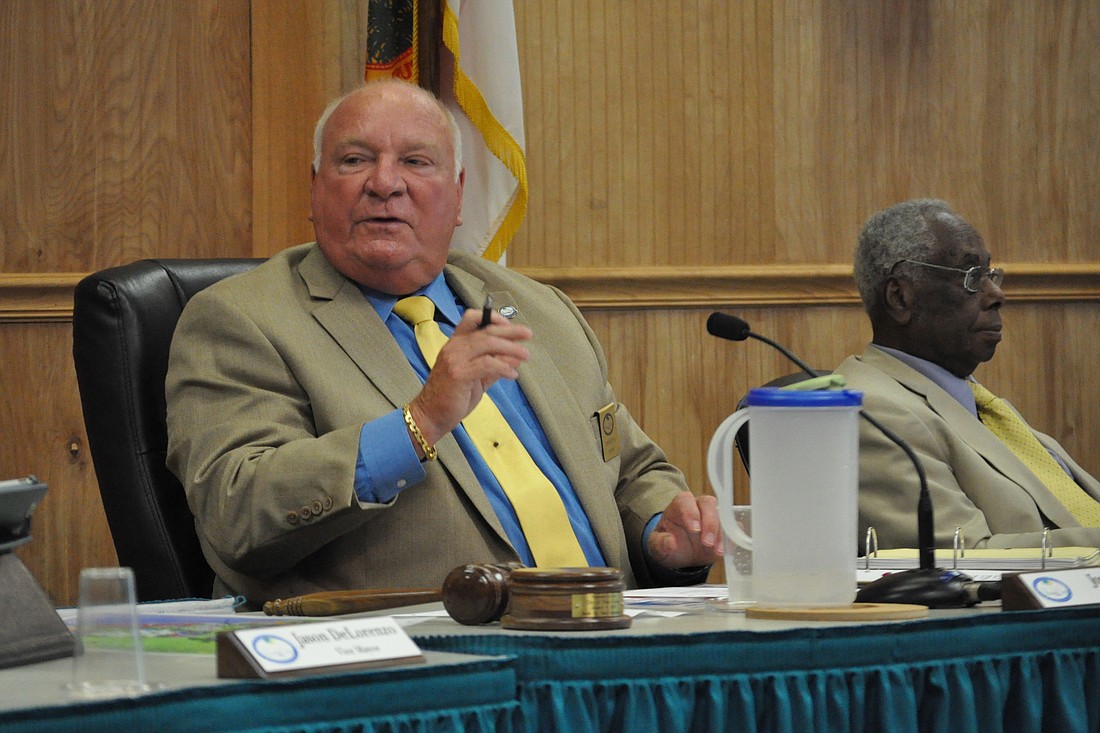- February 26, 2025

Palm Coast’s City Council voted unanimously June 3 to rezone a lot near the Tom Gibbs Chevrolet on McCormick Drive and State Road 100 from office to commercial, a change Mayor Jon Netts said will facilitate development, although the council isn’t yet sure what business might move into the long-vacant space.
“This is generally consistent with the goals of our city,” Netts said. “Right now, we have a plethora of office space that is underutilized. Retail commercial development is what we’ve been looking for to better balance the tax base of our city. So this is consistent with the long-term goals of here we would like the city to go. State Road 100 is going to be the Palm Coast Parkway of the future.”
The lot, a 4.78-acre chunk of land that is part of Bunnell Development Company Subdivision Tract 11, contains a building that was formerly used by the Daytona Beach News-Journal, city Land Development Supervisor Constance Bentley told commissioners during the meeting.
“The property to the east is intense commercial; the property to the west is public, semi-public with general commercial along S.R. 100,” she said. To the north are master-planned development districts.”
The plot is bordered by the Tom Gibbs Chevrolet, a Baptist church, Madison Green and Town Center, she said, and “rezoning the property from general office to general commercial would not change the intensity of setbacks or the dimensional requirements.”
If that happened, she said, the building could still be used for office use, but it could be used for other things, too.
“The big difference in rezoning is that it offers a wider variety of uses,” she said. “They may be able to revive the building, as it's been vacant since 2008.”
The frontage along State Road 100 would be 337 feet, and the frontage along McCormick Drive would be 634 feet, she said, and there is about 221 feet between the residential Tuscan Reserve building and the vacant office building, which was constructed first.
Restaurants, convenience stores and gas stations, Bentley said, would be among the types of businesses that could be permitted there if the property is rezoned that could not be permitted there if it remains zoned as office space.
City Manager Jim Landon said the property owners may be looking to sell and find their options limited by the property’s current zoning.
“The property owners and the people looking at it don’t like to let their secrets out, so I won’t try to let any secrets out, but they have indicated that there’s retail businesses and maybe a restaurant that’s already taken a look at this site, and they’re trying to strike a transfer or sale of the property for retail or restaurant development right on S.R. 100 right in front of the existing building,” Landon said. `
During the meeting’s public comment period, one resident asked Landon to spill the beans.
“You know, on 4.7 acres, I could put a small ammonia plant there, and I don’t think anybody here wants anything like that,” he said, adding that the council ought to know what the land is being used for. “In other words, divulge your secrets,” he said to Landon.
Bentley replied that something like an ammonia plant would need to be zoned for industrial use, and that property zoned general commercial would support the kinds of businesses visible on Palm Coast Parkway.
Landon wanted to drive the point home.
“Let me add to that: An ammonia plant would not be allowed,” he said.
Changing the zoning doesn’t require the council to know what individual business might move onto the property, he said. Plus, he said, that could change.
Councilman Ferguson asked whether whatever business could go into a commercially zoned lot would be compatible with the surrounding properties of the 4.78-acre lot in question.
“I think what we’re trying to understand tonight is, by changing this, are we going to regret it in the future?”
Bentley replied that the zoning districts are designed to prevent incompatible use.
Landon said that whatever business ultimately ends up on the property, it might even come to the city for a building permit for six months, a year, or longer.
“If they come in with a building that meets our code, assuming you approve this, the process can be very simple,” he said. “And as far as time frame, once again — this is an ordinance, so it takes two readings — so after the second reading, they are welcome to submit an actual site plan and start that review process. Chances are what we normally see is that it will be a good six months. … The timing on that, every one is different.”